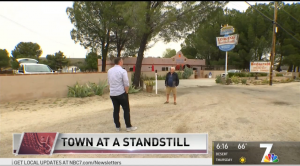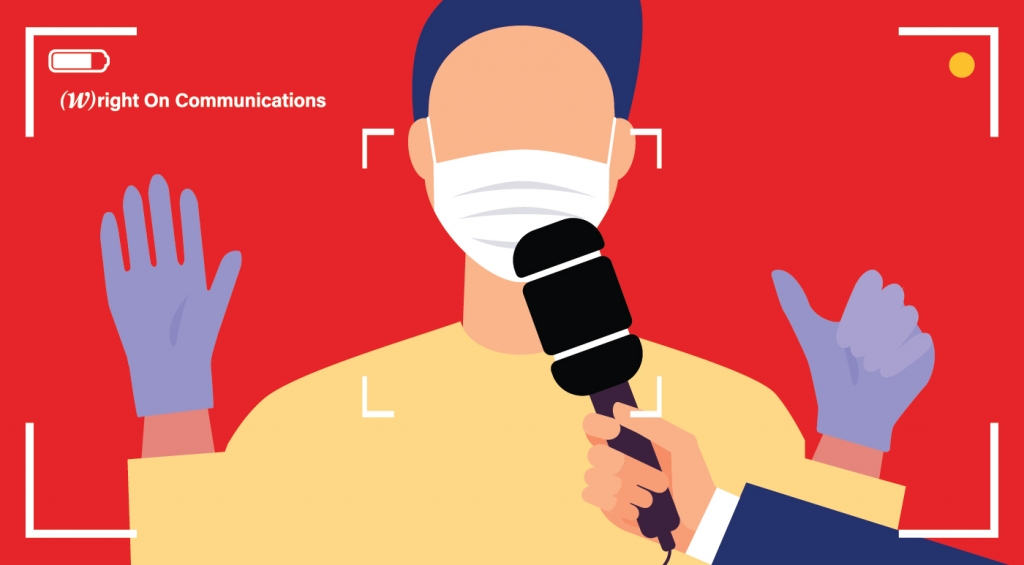By Julie Wright — President
Local news anchors have always broadcast into our living rooms, but suddenly they’re the ones inviting us into their homes. From New York to L.A., television news reporters are reporting from home so they can stay safe while keeping the public informed.
The public is hungry for storytelling that informs, entertains and comforts, and, thankfully, news reporting is an essential service. Organizations like the Radio Television Digital News Association (RTDNA) have Guidance for Newsrooms to keep broadcasters safe; however, the association’s number one recommendation is that they avoid the newsroom.
For tips on how media relations professionals should be pitching TV reporters in this environment, we talked to Joe Little, a multimedia journalist and news reporter for NBC 7 San Diego where he’s also director of storytelling.
1. Reporting While Social Distancing
Reporting remotely is nothing new to Little, but social distancing is. “The biggest challenge has been being creative while being safe.”
“Some of us still venture out into the world to get our interviews done,” says Little, who works solo. “We are just extremely careful and considerate when we do so. I no longer put a microphone on my characters. I have them walk up to a stationary microphone that I’ve already put into position so we can talk safely across a room from each other.”
When pitching TV reporters, instead of offering a journalist a talking head on FaceTime, offer them an opportunity via video chat to join a family dinner table discussion, a team meeting or a site tour.
For instance, Little recently interviewed several residents who stood outside of their homes and talked from a balcony and through a closed window.
2. Interviewing Over Video Chat
A promise of a good interview will go a long way, says Little. However, interview subjects—or, as he calls them, characters—need to be tech savvy. “If it’s a situation where the interview has to be done using FaceTime or Zoom, it would be great if the people we were interviewing actually knew how to use a camera,” said Little.
If you or your spokespeople follow these basics when setting up for interviews, you might find reporters coming back to you or your organization for more:
- Horizontal screen orientation
- Camera placed at eye level
- Camera on a flat, steady surface
- Clear and even lighting on your face
- Muted alerts and ringers
- Fully charged batteries or a power source
- Solid and steady Wi-Fi signal
Try to take the same attitude as Little: “Even though I’m working from home, I still try to make my stories look better than anyone else’s. The people who say yes to an interview deserve that effort.”
3. Contributing Stills or B-Roll
In the past, network affiliates like NBC San Diego haven’t used submitted video unless absolutely necessary. Times have changed, notes Little, and right now reporters are more willing to talk with their bosses about taking video from the people they interview.
Independent stations tend to be more flexible and to appreciate b-roll if it helps to tell a good story.
Little will also use still images or a graphic as a backdrop for his FaceTime interviews just to give them more visual interest.
However, none of the above will help if you’re pitching TV reporters a story that doesn’t matter.
4. Telling Stories That Matter
News media have always looked to share stories that matter with their viewers and readers, but coronavirus is an unprecedented public health disaster. What mattered to people in 2019 is not the same as what matters to them in 2020.
Little says stories that matter are “Stories that impact more than your client’s bottom line or three people.”
It’s time to demonstrate your best news judgment and find the story angle that will make a difference in people’s lives. How does what you or your client do help people stay safe, cope, connect or feel better?
Most pitches that he receives these days don’t meet that criteria, and he says he is literally deleting dozens of emails every day without reading them because, by the first line, it’s clear they’re not pitches that matter.
5. Build Your Media Relationships
Media relationships matter more now than ever.
“The best PR representatives play favorites. Instead of casting a wide net and hoping to get two or three crappy stories on the air, the smart PR reps feed the story to the one reporter they know will do it and do it well,” Little says.
“I won’t stick my neck out for someone if I know they invited every station in town as well. What would your client rather have? Three short crappy stories or one really good story?”
Craft your pitches with each TV reporter or journalist in mind. As a professional, you need to have their backs and make sure the spokespeople, video chats or story angles you propose meet or exceed their expectations!
INFOGRAPHIC: How to Earn Media Coverage in Major News Outlets
6. Focus on Quality Information
The same goes for the information you provide. Have your facts straight. In this environment of conflicting or shifting public health information, news reporters are especially sensitive to the quality of the information that they are bringing the public. So, savvy media relations professionals need to take the same care when pitching TV reporters.
Jeff Zevely, feature reporter with San Diego’s CBS News 8 team, who says journalists are working as hard and focused as ever to deliver trusted information to people.
“I feel dealing with facts provides peace of mind to viewers and a message that we will make it through these challenging times.”
Zevely recalls being told by a veteran news anchor that there are only a few stories in a reporter’s lifetime that define a news organization. He says, “COVID-19 is one of those stories. Our viewers and web readers are relying on us for information and storytelling more than ever.”
7. Remember We’re All In This Together
There’s a lot of pressure on the media: smaller newsrooms, tighter budgets and now even fewer resources as reporters report from home.
Little and Zevely have all the safety and broadcasting equipment they need to do their jobs safely and solo. But that doesn’t mean they don’t miss their friends or worry for the safety of their own loved ones.
Little says he’s meticulous about cleaning his gear, car and himself and careful to keep his distance from other people while telling his stories. But he also says he misses his coworkers, a lot.
“I’m a hugger and I haven’t hugged a friend in almost three weeks.”














